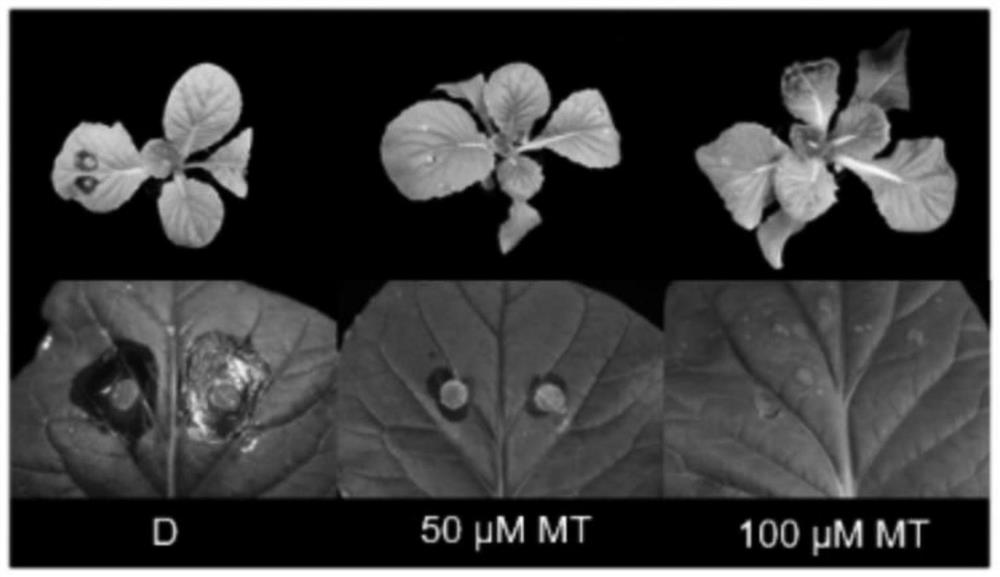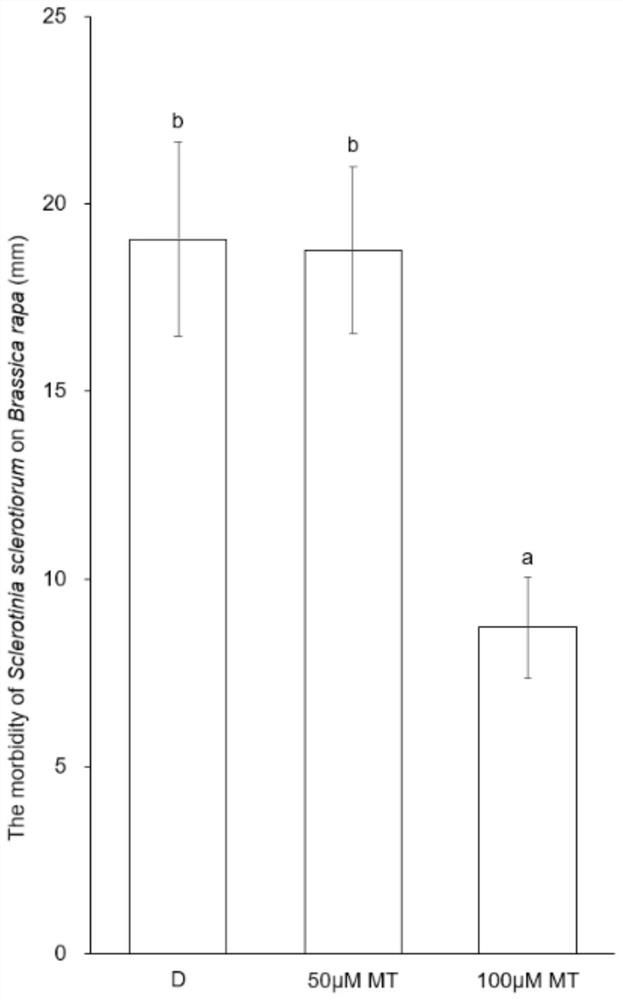Method for improving sclerotiniose resistance of Chinese cabbages
A technology of Chinese cabbage and sclerotinia, which is applied in the field of improving the resistance of Chinese cabbage to sclerotinia, can solve problems such as difficult treatment, and achieve the effects of reducing economic losses, reducing usage, and low input costs
- Summary
- Abstract
- Description
- Claims
- Application Information
AI Technical Summary
Problems solved by technology
Method used
Image
Examples
Embodiment 1
[0024] The method for improving the resistance of Chinese cabbage to sclerotinia disease according to the present invention includes the following steps:
[0025] (1) Preparation of Chinese cabbage seedlings: The test material was "Zaoshu No. 5" Chinese cabbage, which was purchased from Wenzhou Xianfeng Seed Co., Ltd. Sow the Chinese cabbage seeds in a petri dish lined with soaked filter paper at 25°C for 24 hours, and then sown them in the substrate. When they grow to 1-2 true leaves, select seedlings with consistent growth and transplant them into plastic pots ( 6cm×8cm×9cm).
[0026] The culture conditions are: under natural light, the average daily temperature is 25-30°C / 15-18°C (day / night) 1 Relative humidity fluctuates about (85±5)% under the condition of a photoperiod of 16h / 8h, the maximum The light intensity is 600μmol·m-2s-1.
[0027] (2) Configure the melatonin solution: first mix ethanol and water to make a 0.1% ethanol aqueous solution to make constant volume, then add...
Embodiment 2
[0030] The materials and preparation process are basically the same as those of Example 1, except that the concentration of melatonin in the melatonin solution is 100 μM.
PUM
 Login to View More
Login to View More Abstract
Description
Claims
Application Information
 Login to View More
Login to View More - R&D
- Intellectual Property
- Life Sciences
- Materials
- Tech Scout
- Unparalleled Data Quality
- Higher Quality Content
- 60% Fewer Hallucinations
Browse by: Latest US Patents, China's latest patents, Technical Efficacy Thesaurus, Application Domain, Technology Topic, Popular Technical Reports.
© 2025 PatSnap. All rights reserved.Legal|Privacy policy|Modern Slavery Act Transparency Statement|Sitemap|About US| Contact US: help@patsnap.com



